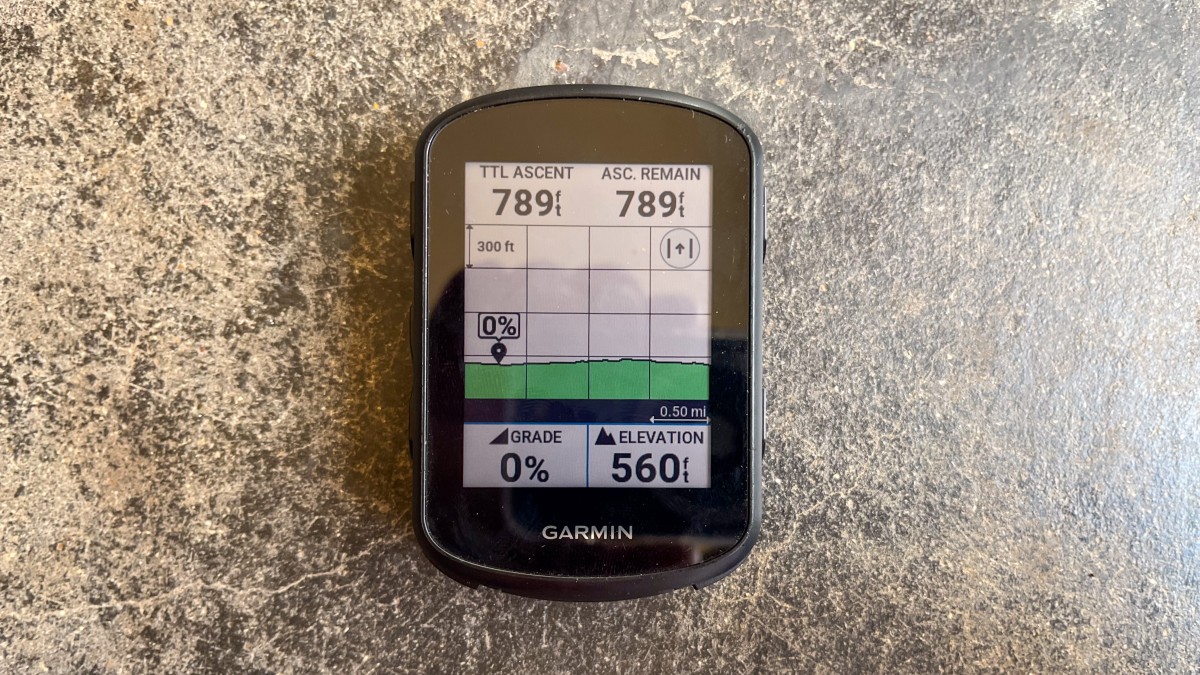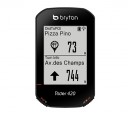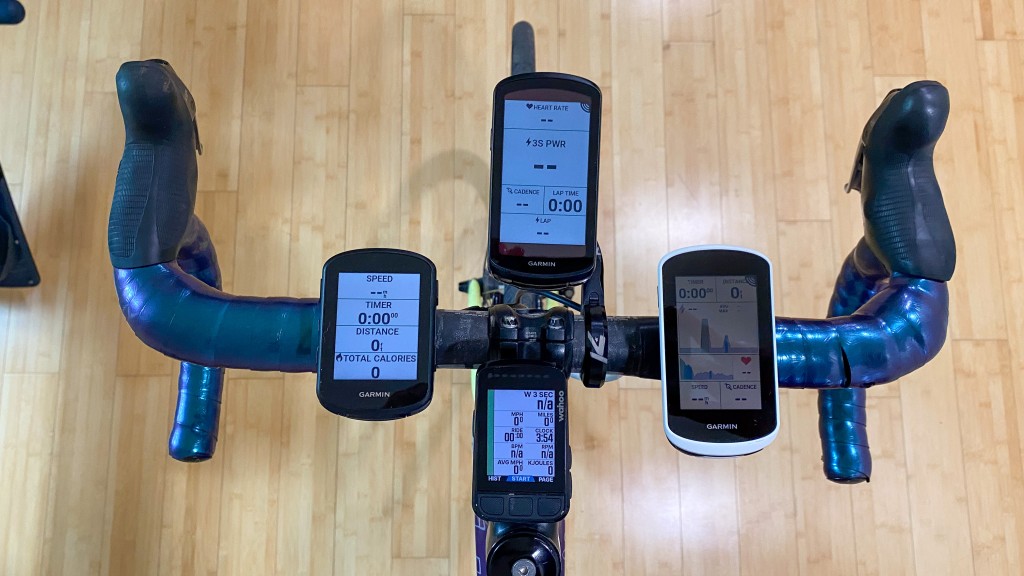Our Verdict
Compare to Similar Products
 This Product
Garmin Edge 840 | |||||
|---|---|---|---|---|---|
| Awards | Best Overall Bike Computer | Best Balance of Ease of Use and Functionality | Best for Bikepacking and Touring | Best Bang for the Buck GPS Enabled Computer | Best Basic Computer |
| Price | $430.00 at Amazon Compare at 2 sellers | $279.99 at Backcountry Compare at 2 sellers | $265.90 at Amazon Compare at 2 sellers | $160 List $99.95 at Amazon | $60 List |
Overall Score  |
|||||
| Star Rating | |||||
| Bottom Line | A great interface and unmatched feature set in a pricey device that raises the bar for bike computers | Easy to use and well designed device whose smaller screen and lack of activity profiles keeps it out of top spots | Excellent navigation and mapping with colorful screen that lacks workout planning and can be slow at times | You're trading user experience for price against unrefined performance | The ideal computer to get your basic riding data without fussing over the noise |
| Rating Categories | Garmin Edge 840 | Wahoo Fitness ELEMN... | Garmin Edge Explore 2 | Bryton Rider 420 | CatEye Quick |
| Ease of Use (30%) | |||||
| Ease of Setup (20%) | |||||
| Features (20%) | |||||
| Versatility (20%) | |||||
| Water Resistance (10%) | |||||
| Specs | Garmin Edge 840 | Wahoo Fitness ELEMN... | Garmin Edge Explore 2 | Bryton Rider 420 | CatEye Quick |
| GPS enabled | GPS, Glonass, Galileo | GPS, GLONASS, BEIDOU Galileo, and QZSS | GPS, Glonass, and Galileo | GPS, Glonass, BDS, Galileo, QZSS | No |
| Cadence Sensor | ANT+ or Bluetooth | ANT+ or Bluetooth | ANT+ or Bluetooth | ANT+ or Bluetooth | No |
| Heart Rate Monitor | ANT+ or Bluetooth | ANT+ or Bluetooth | ANT+ or Bluetooth | ANT+ or Bluetooth | No |
| Power Meter | ANT+ or Bluetooth | ANT+ or Bluetooth | ANT+ or Bluetooth | ANT+ | No |
| Smart Trainer | ANT+FE-C | ANT+FE-C | ANT+FE-C | ANT+FE-C | No |
| WiFi | Yes | Yes | Yes | No | No |
| Weight | 85g | 68g | 104g | 67g | 18g |
| Dimensions | 2.3" x 3.4" x 0.8" | 3.1" x 1.9" x .84" | 4.2" x 2.2" x 0.8" | 2" x 3.3" x 0.86" | 3.7" x 2.1" x 1.4" |
| Display Size | 2.6" | 2.2" | 3" | 2.3" | 1.25" x 1.25" |
| Battery Type | Re-chargable lithium ion | Re-chargable lithium ion | Re-chargable lithium ion | Lithium polymer | CR2032-Sensor, CR1616-Display |
| Battery Life | Up to 26 hours (claimed) | 15 hours (claimed) | Up to 16 hours (claimed) | Up to 35 hours (claimed) | 1+ years |
| Touchscreen? | Yes | No | Yes | No | No |
| Phone App | Garmin Connect | ELEMNT Companion | Garmin Connect | Bryton Active App | None |
| Accessory Interface ANT+, BTLE, BT. | Bluetooth, ANT+, WiFi | Bluetooth Smart, ANT+, WiFi | Bluetooth, ANT+ | Bluetooth, ANT+ | Proprietary Analog Wireless |
| Strava Segments | Yes | Yes | No | No | No |
| Text, Email, Call notifications | Yes | Yes | Yes | Yes | No |
| Navigation | Yes | Yes | Yes | Yes | No |
Our Analysis and Test Results
When the biggest criticism of a device is that it “does too much,” you probably have a pretty good device on your hands. And while the Edge 840 may indeed do too much for many people, it's not hard to customize it for your specific needs, making it an exceptional bike computer for just about anyone. The interface is intuitive, and the multiple ride profiles are fantastic for anyone with multiple bikes or who uses one for many activities. The physical buttons supplement the touchscreen, making the device easy to use without looking at it or in the rain. This was a big annoyance on the previous iteration of the device, and the changes make it incredibly easy to use. All these elements combine to make the Garmin Edge 840 our Editor's Choice in bike computers.
Performance Comparison
Features
The feature set of the Garmin Edge 840 is unmatched in the world of bike computers. It can do more than you can imagine, and it almost certainly does more than you need. We found some features surprisingly useful and others not at all, but we're sure that anyone will be satisfied with the abilities they've built into this device.
Like any good bike computer, the Edge 840 can keep track of many direct metrics about your bike ride if you have the necessary sensors. Speed, heart rate, distance, time, cadence, and power, are the basics that any computer should offer you. This computer takes that basic feature set and adds in excellent navigation and maps that either pull routes from sites like Garmin Connect, Ride with GPS, Strava, or Komoot or that are modifiable directly on the device, allowing you to redesign a route while you're out on a ride. There's also ClimbPro, Garmin's ascent planner. It detects climbs on your route and breaks them down into understandable segments, letting you know how steep and long the climb is overall, where you are on the climb, and what the upcoming sections have in terms of a gradient. This feature was available on the older version of the device, the 830; if you programmed in a route, the 840 increases the usefulness of ClimbPro, by using it even when you don't have a route programmed in. That makes it fantastic for knowing what's coming when you're exploring in the hills.
We definitely can't write about every feature Garmin has brought to the table, so let's talk about a few differentiators from other devices in list format:
- Real-time stamina estimation based on previous rides and your current effort
- Workout suggestions based on exercise history and other Garmin wearable data
- Shimano Steps eBike motor support
- Configuration of data screens either on the device or on your phone
- TrailForks mountain biking integration for mapping and route design
- Ability to build multi-step, structured workouts on the device
- Integration with Strava segments to display data on the device during rides
- Smart trainer controls and custom workouts
Ease of Setup
This is an area where the Garmin Edge 840 can be a little overwhelming to people who aren't used to using bike computers. If you're coming from an older Garmin device, like the Edge 520 or 830, setup is a breeze, as the Edge 840 will sync ride profiles with that older device to get you up and running quickly. If you're coming from a different computer brand or no computer at all, setup is a bit more challenging.
When you first fire up the Edge 840, it detects the sensors you have in the area, connects to them, and creates default data screens for you based on the sensors available. This is nice in theory, but we found that these default data screens usually needed quite a bit of customization to make them useful. While customization is easy on the device or on your phone, our testers who weren't tech-heads got overwhelmed by the sheer number of options and wanted to give up and ride their bikes after a couple of minutes of futzing around. That's the challenge of having a device with so many features. Getting those features set up properly can be tough.
When you add on the many activity profiles you can set up on the device, the process of getting it just right for yourself can take a couple of dozen rides. A tester of ours who is especially fiddly with their stuff has 10 different activity profiles set up on their device (the maximum allowed), each with data screens for that exact activity. They have different profiles for “Mountain Biking” and “Mountain Bike Racing” because they like things to be just so on every ride. This is a pain to set up, but it does let you make the device perfect just for you.
The other half of the setup equation is your Garmin account and profile in their app, Garmin Connect. This is another category where things will be chill if you're already a Garmin user. You'll have a Connect account already setup and can dive right in. If you're new to the Garmin world, the setup process isn't bad and we generally found it to be quite smooth. One of our testers factory reset the computer and handed it to their partner to go through the setup. Their partner commutes by bike but wouldn't call themselves a cyclist, nor are they super into tech. They had never used a bike computer like this before. Even so, they were able to set up an account on Garmin Connect and connect the Edge 840 to their phone in under 5 minutes. They had more difficulty parsing the many data screens and pages in the Garmin Connect app once they got things up and running, but that's another section.
Ease of Use
Once you get the Garmin Edge 840 set up how you like it, it works brilliantly and straightforwardly. The interface is intuitive and clean, and the device gets straight to the point once you boot it up, showing you recent routes you've synced to it, the current weather (when it's connected to your phone), your recent workouts, Garmin's suggested workout, and even sunrise/sunset times if you've set it up that way. From power off to starting a workout, only 25 seconds and one button push are required. And if you're waking it up from sleep, it's a seven-second process from wake to ride. For usability, this is fantastic.
Garmin has taken big steps forward in this category with the introduction of physical buttons to complement the touchscreen and the increased stability of the software. Older Garmin Edge units were notoriously buggy and would reboot during workouts, lose rides, and fail to sync with cell phones on the regular. In our months of testing, we never had a single problem with this device being buggy or unpredictable. With the addition of physical buttons alongside a touchscreen, the device is now easy to use in the rain. The touchscreen has always been wonderful in the dry, but on touchscreen-only Garmin devices, you've had to wipe it off in order to use it in the wet. In very heavy rain, the touchscreen was almost useless and sometimes spasmodic, hitting buttons and changing settings of its own accord. With the addition of physical buttons, you can now lock the touchscreen when it's raining and continue to use the device as normal. This greatly enhances usability in everyday life.
Versatility
Because of the Garmin Edge 840's many activity profiles and the ability to add up to 30 sensors and use 12 at a time, it's an incredibly versatile device. It's great for commuting, racing, and training indoors and out and off-road and on. We've used it for criterium races and bikepacking trips and have taken it on commutes every day. Garmin claims that it gets about 26 hours of battery life in normal use, and this has been our experience with the device. We only have to charge it once every 10 days or so to keep it running, even though we've used it for multiple rides per day most of the time.
The physical buttons are also helpful here, making it a great device to use in the winter. It's a huge pain to take off winter gloves in order to check a bike computer, and not all heavy gloves are touchscreen compatible. Having prominent physical buttons in addition to the touchscreen makes the device much better to use every day of the year.
Should You Buy the Garmin Edge 840?
If you're looking for the best all-around bike computer, the Garmin Edge 840 is for you. It has an incredible feature set, great usability year-round, and a nice touchscreen display complemented by physical buttons when you need them. People who only participate in one area of cycling or are easily overwhelmed by many settings and features may want to look at some other bike computers we've reviewed recently; this device may not be a good value for them. But if you're undaunted by a feature-packed device that may take a little extra time to get a handle on, the Garmin Edge 840 is for you. And if you need even more battery life, it's available in a version with an integrated solar panel too.
What Other Bike Computers Should You Consider?
If you're looking for the same feature set with a much larger screen and are willing to deal with a device that's touchscreen-only, check out the Garmin Edge 1040 Solar. If you feel like the Edge 840 may do a bit too much for you or are interested in a device that does excellent navigation while eschewing the more complex features of the 840, the Garmin Edge Explore 2 may be more up your alley, it's great for navigation. And if budget is your concern, look into the feature-filled but less expensive Lezyne Mega XL GPS or the Bryton Rider 420.















